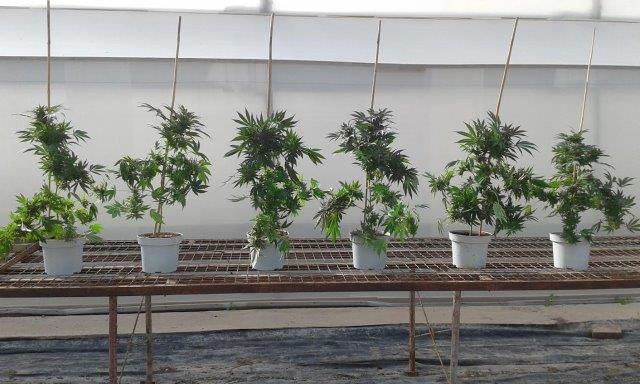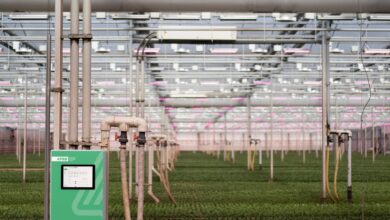Precision agriculture for agro-hightech production of Medical Cannabis
Concentrations within the plant and in the production site are largely influenced by growing conditions such as.. Dr. Nirit Bernstein, Institute of Soil water and Environmental Sciences ARO

The ‘magic’ of cannabis – i.e., the unique wide range of its medical benefits – is attributed to the large number of natural phytochemicals, more than 600, in its flowers. A key factor for medical use of cannabis is standardization of the composition and dosage of these pharmaceuticals in the medical product supplied to the patients. Concentrations within the plant and in the production site are largely influenced by growing conditions such as fertilization, irrigation, light and temperature. Precision agriculture should be explored as a tool for optimization of the cultivation techniques in order to normalize the chemical makeup in the plant product.
Cannabis sativa has a very long history of human use. Evidence of its utilization and cultivation dates back thousands of years. The use of cannabis by humanity varied depending on time and place, ranging from fiber production, medicinal, religious and recreational.
Recently, cannabis is studied as a potential treatment for an increasing number of medical conditions and there is a significant body of evidence supporting its efficacy for the treatment of diseases and disorders (Alexander, 2016).
Benefits of cannabis have been reported for relief of pain (Liang et al., 2004; Holdcroft et al., 1997) including in cancer patients (Hall et al., 2005; Ungerleider et al., 1982), eating disorders such as obesity and anorexia (Gelfand and Cannon, 2006; Patel and Pathak, 2007), multiple sclerosis (Iskedjian et al., 2007), inflammation (Croci and Zarini, 2007), diabetes (Penner et al., 2013; Weiss et al., 2006), epilepsy (Devinsky et al., 2017), neurodegenerative disorders such as Alzheimer’s disease (Campbell and Gowran, 2007), Parkinson’s disease (Alsausa del Valle, 2006), Huntington’s disease (Sagredo et al., 2012) and more.
 |  |
The unique wide range of medical benefits of cannabis is attributed to the extensive profile of its natural phytochemicals. The cannabis plants contain more than 600 secondary metabolites of potential pharmaceutical activities (Aizpurua-Olaizola et al., 2016). These phytochemicals include cannabinoids, a group of over 100 related terpenophenolic compounds with a wide range of biological activities (Flores-Sanchez and Verpoorte, 2008; Marcu, 2016), as well as the volatile aromatics terpenes and flavonoids (Russo, 2011). The most known biologically active cannabinoids are the psychoactive 9-tetrahydrocannabinol (THC), and the nonpsychoactive cannabidiol (CBD) (Mechoulam et al., 2007).
Cannabinoids are synthesized in the cannabis plant as carboxylic acids and they decarboxylate to their neutral active forms during heating or smoking. For example, Δ9-tetrahydrocannabinolic acid (THCA) is converted to THC, and CBDA is converted to CBD. These active phytochemicls accumulate in the plant in trichomes that are found in largest densities on non-fertilized female flowers.
A large variability of the chemical profile exists in cannabis. Cannabinoid contents and composition are highly variable among cannabis strains. Some strains are characterized by a high-THCA/low- CBDA chemotype, whereas others have a low-THCA/high-CBDA chemotype, and many intermediate types exist. There are large variations between strains also in terpene and flavonoid profiles (Russo, 2011). Moreover, variability in composition and dosage of the therapeutic compounds occurs also within a single plant, and between plants in the production site. This variation may be present both on the organ level, as well as the development and ontological levels, a topic which is currently under investigation in our laboratory.
A key factor governing the production and accumulation of secondary metabolites in plants is the cultivation conditions. Factors such as temperature, light quantity and quality, relative humidity, water availability, and stress conditions are known to affect the biosynthesis and accumulation of secondary metabolites in plants (Gorelick and Bernstein, 2014). Initial evidence suggests that cannabinoid and other secondary metabolites in cannabis are involved in the defense response of the plant and it is therefore not surprising that their biosynthesis and accumulation is affected by cultivation conditions.
 |  |
The large number of phytochemicals in the cannabis plant, together with the need to standardize composition and dosage in the material supplied to patients, dictates a need to standardize the chemical profile in cannabis. Information about the factors regulating the phytochemical profile is essential to achieve this goal. Optimal utilization for modern medicine requires standardization of the quality and quantity of the therapeutic phytochemicals in the flowers- within the plant, between different plants in the cultivation site, as well as between cultivation cycles.
Achieving this will be a major step towards bridging the gap between the plant world and the pharmaceutical world allowing supply of standardized plant product to the medical users. Obtaining science-based information about the plant response to changes in cultivation conditions is thereby required for development of regulated production endeavors, and is currently the focus of several studies in my lab. Our understanding of the contribution of various chemicals in cannabis for specific medical indications is growing rapidly and is likely to generate many various required chemical profiles to target specific indications and conditions, and for personalized medicine.
Precision agriculture can be harnessed for unification of the cultivation conditions spatially and temporally in the cultivation sites and for site specific crop management. It is a potential tool that should be explored for standardization of the growing conditions and quality of the medical product, once the optimal growing conditions will be determined. A farming management concept based on responding to inter and intra-field variability in crop and environmental conditions such as temperature, light quality and intensity, fertilization and irrigation inputs and more, may be used to define a decision support system for cultivation management.
It should be noted that since the cannabis sativa plant and the derived plant materials are defined in many countries as illegal drugs, research efforts involving this plant or its products require specific infrastructure, licenses and various authorizations. Advancing the scientific knowledge in this fascinating area of research is therefore more demanding compared to work with conventional plants, requiring regulatory efforts in addition to scientific skills.




